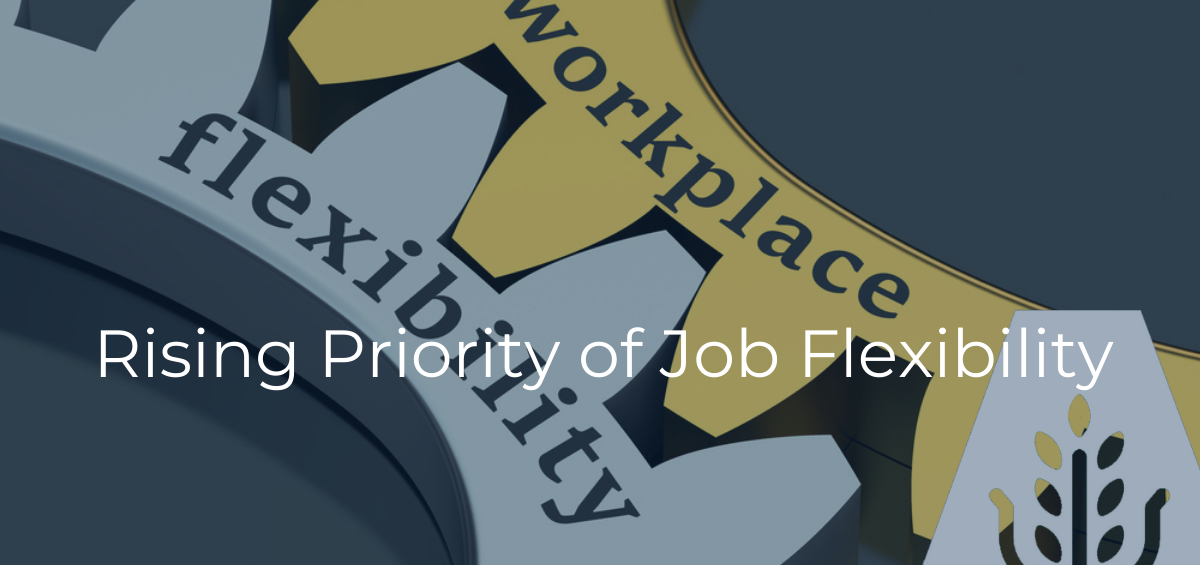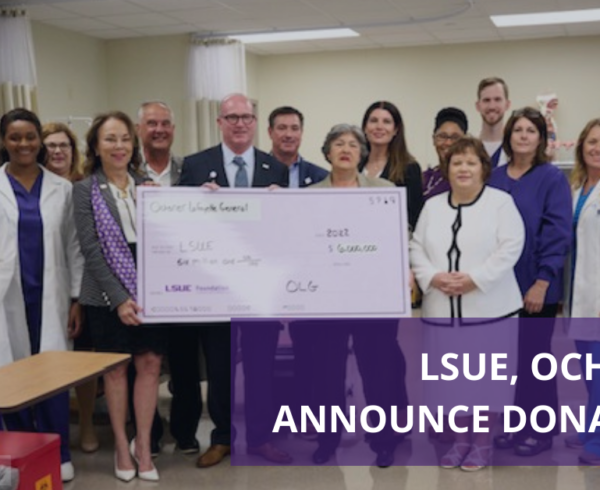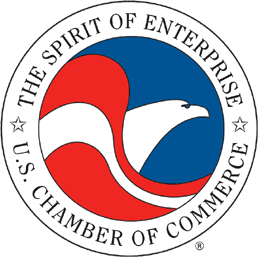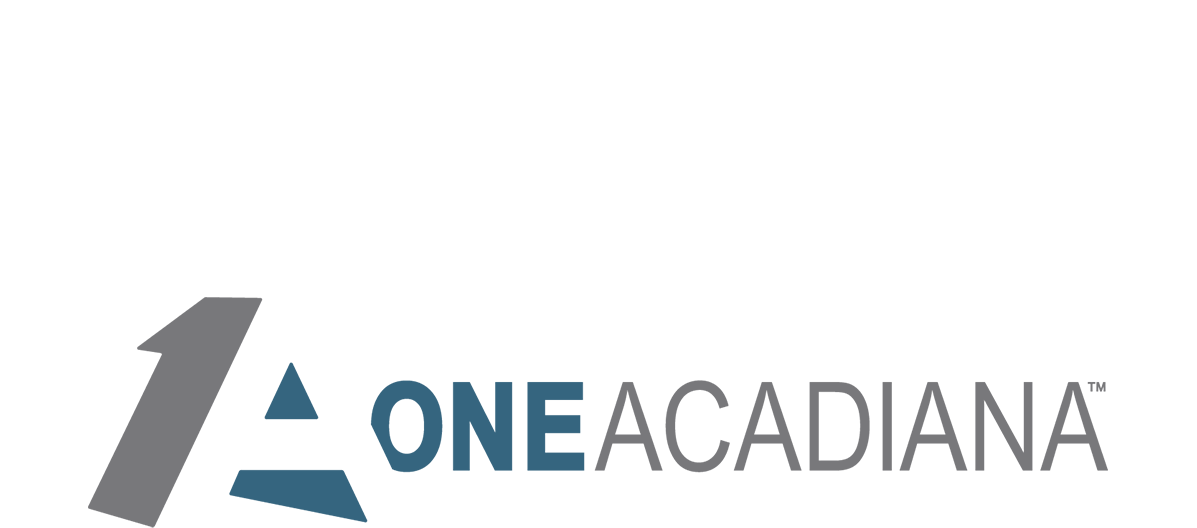Every week, Ohio career coach Colleen Sauer helps people hunting for better jobs. She’s accustomed to clients wanting to advance their careers, earn more money–or simply find a healthier work culture.
Lately, though, a new message has been gaining strength. After a year of abandoning office settings in favor of hastily improvised work-from-home arrangements, clients’ basic sense of a “good job” has been deeply altered.
“What people are really looking for now is flexibility,” Sauer says. Working parents want to adjust the job clock themselves–establishing the start, stop and break times that work best for them. Single people want the freedom to change cities, while still keeping the same employer.
What Sauer sees in person, the latest edition of LinkedIn’s Workforce Confidence survey establishes on a national scale. More than a year of living with the COVID-19 pandemic has changed the way we think about work. Freedom and personal control feel much more vital, gaining mindshare that might previously have gone toward money, perks or titles.
Specifically, 50 percent of respondents say that flexibility of hours or location has become more important to them, post-COVID, when it comes to looking for a new job opportunity. That’s the fastest-rising factor, ahead of work-life balance (45%), benefits such as health coverage (41%), pay (36%) and workforce culture (36%).
Flexibility pops up as the fastest-rising priority in all four of the main workplace generations–ranging from older baby boomers (born between 1946 and 1964) to younger Gen Z members (born in 1996 or later). But the desire for flexibility is growing most keenly (55%) among millennials, born between 1981 and 1995.
Millennials are most likely to be parents of young children, putting them in an especially strained cohort given the degree to which schools have struggled to resume in-person classes. Millennials also may be more assertive about their career priorities than Gen Z members. With limited work experience, it could be harder for people aged 25 or younger to push back against employers’ constraints.
The chart below shows how post-COVID priorities vary across generations. Responses are based on a survey of 5,291 LinkedIn members in the two-week period ended March 13.
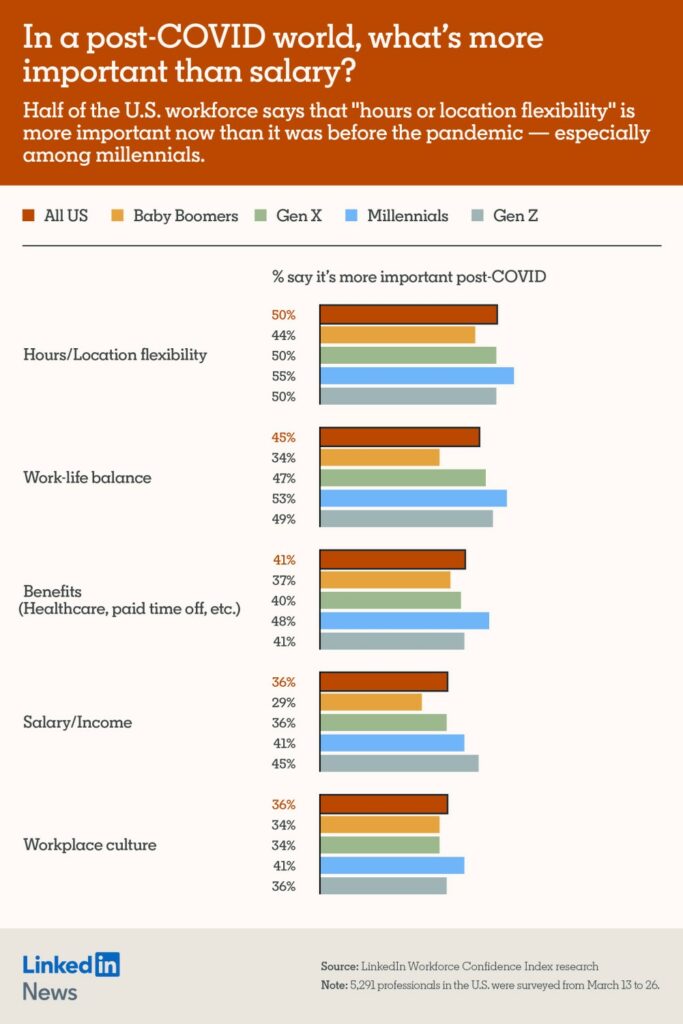
A few years ago, flexibility wasn’t even on the map, in terms of conversations about employees’ priorities.
In 2017, when Gallup pollsters asked Americans to define the key elements of their dream job, employees “ability to do what they do best” ranked No. 1. It was followed by work-life balance, job security, higher pay and joining a company with a great reputation. Those were regarded as the “big five” factors.
But times have changed. “Before the pandemic, Americans spent 5% of their working time at home,” The Economist magazine reported in a recent cover story. “By spring 2020 the figure was 60%. The shift has gone better than expected. People are working longer hours, but they report higher levels of happiness and productivity.”
“As lockdowns lift, working from home is likely to stay,” The Economist predicted. Actually, the exact nature of our new, post-pandemic work habits is still in flux. But that’s all the more reason why flexibility is now so prized.
Some jobs may be well-suited to a reliable, 50-50 mix between working at home and working in an office. Others may support highly variable arrangements, week by week. We’re all experimenting. We’re all learning.
Have attitudes toward remote work changed during the past year? The surprising answer, according to Workforce Confidence data, is “Hardly at all.”
In the early stages of COVID-related shutdowns, back in May 2020, 66% of respondents said they thought they could be effective when working remotely. When the same question was asked in March 2021, the exact same percentage said yes again.
There are some notable fluctuations by occupation. Media professionals were strikingly optimistic (77%) last May about their remote-work effectiveness, and even more so (85%) last month. Optimism also increased in arts, design and sales. By contrast, doubts intensified across occupations in health care, human resources, administration and finance.
Generational attitudes evolved slightly differently, too. People in Gen Z got a bit more upbeat about their ability to handle remote working; baby boomer became mildly more pessimistic. Overall, though, it’s striking how often people’s first sense of how they would handle remote work turned out to be enduringly accurate.
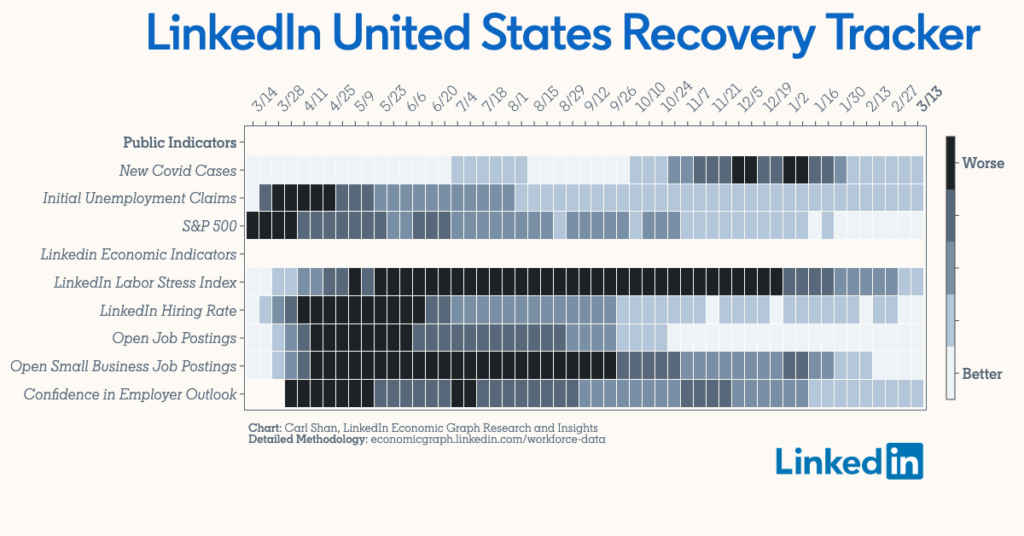
Workforce Confidence Index methodology
LinkedIn’s Workforce Confidence Index is based on a quantitative online survey distributed to members via email every two weeks. Roughly 5,000 U.S.-based members respond each wave. Members are randomly sampled and must be opted into research to participate. Students, stay-at-home partners and retirees are excluded from analysis so we can get an accurate representation of those currently active in the workforce. We analyze data in aggregate and will always respect member privacy. Data is weighted by engagement level, to ensure fair representation of various activity levels on the platform. The results represent the world as seen through the lens of LinkedIn’s membership; variances between LinkedIn’s membership & overall market population are not accounted for.
Original article published by George Anders, and contributed by Neil Basu, Artem Chelovechkov, and Ben Tjaden.


